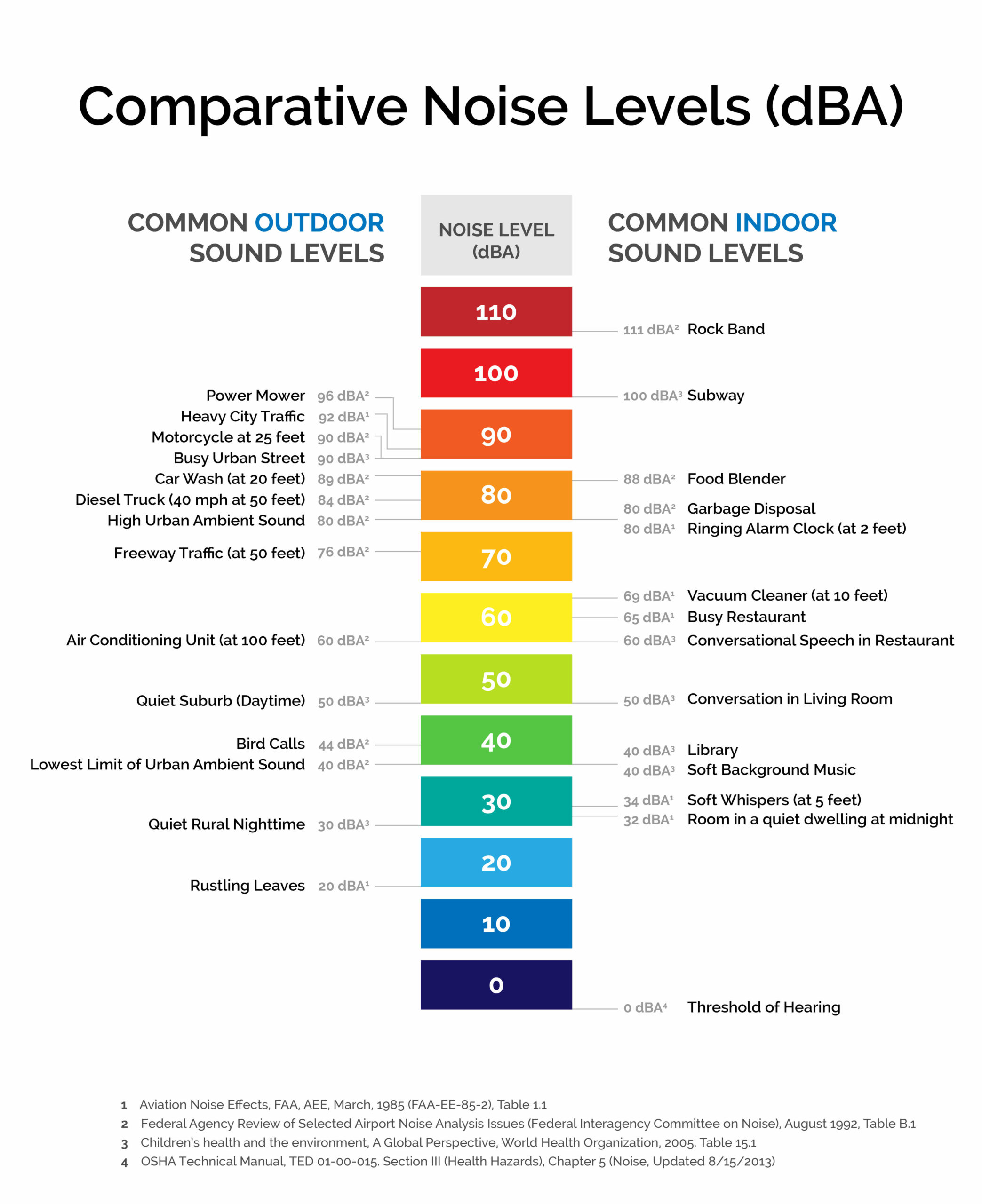Aircraft Noise Overview
Aircraft noise remains as one of the most notable disturbances to communities surrounding an airport. The NEPA environmental review process requires the FAA to assess the potential noise impacts associated with a proposed action. This process creates an opportunity for the public to understand the impacts of the Proposed Action in their community and to provide comments on the procedure.
Sound energy is measured in decibels (dB) on a logarithmic scale, which means a 70 dB noise event has 10 times as much energy as a 60 dB event. To better correlate the measure of sound to the human hearing response, aircraft noise is measured on an A-weighted decibel (dBA) scale. This “A-weighting” means that frequencies of sound audible to the human ear are emphasized while frequencies of sound inaudible to the human ear are deemphasized. On this scale, normal human speech is about 60 dBA and a typical vacuum cleaner is about 70 dBA (or about 100 times the energy of normal human speech) with the figure to the right providing many more examples of noise levels.

Exposure Level
Single Event Noise Level (SEL) and Day-Night Average Sound Level (DNL)
The SEL metric represents the sound level of a single, individual noise event. This metric provides insights into the maximum sound level achieved by any single aircraft event. However, the SEL does not provide insights into cumulative noise exposure, such as multiple aircraft flying in and out of an airport.
FAA has adopted the Day-Night Average Sound Level or DNL as the primary metric for aviation noise studies. The DNL metric is required by FAA Order 1050.1F, Environmental Impacts: Policies and Procedures, to assess aviation noise impacts from the Proposed Action. DNL represents the total cumulative exposure to sound (in dBA) over a 24-hour period. This metric allows for the FAA to assess the impacts from single aircraft noise events and the total number of operations at an airport over the course of a day. The DNL metric used by the FAA also gives an additional weighting of 10 dBA to nighttime sound events (between 10 pm and 7 am) to reflect the increased human sensitivity to noise at night.
The DNL cumulative metric has been the industry standard since the 1970’s. For air traffic airspace and procedure actions, the FAA has set DNL 65 as the “significance threshold” for NEPA. Furthermore, the FAA defines significance as any location exposed to noise greater than 65 DNL or experiencing an increase in 1.5 dBA in noise as a result of a Proposed Action.

